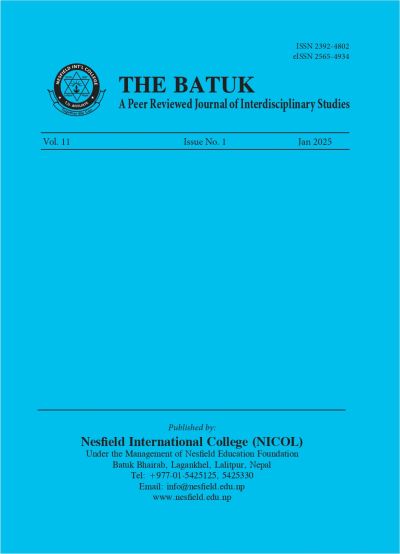Rhetoric of some Nepali Folklores and their Changing Modes of Expressions
DOI:
https://doi.org/10.3126/batuk.v11i1.74444Keywords:
rhetoric, folklore, Gandharvas, Limbu, gaon khane katha, storytelling, NepalAbstract
This article critically observes three cultural assets of Nepal: gaon khane katha or folk riddles available all over Nepal, some folk songs performed by the Gandharavas of mid-western Nepal and some songs accompanied by dances performed by the Limbu community of eastern Nepal. It examines how changing logic of rhetorics, including political changes, advent of modernity and the burgeoning of digital technology have forced changes, adaptation or altogether discontinuity of some of these cultural assets in spite of governmental and public efforts for preservation and promotion. The article concludes that these components of folklore, being rooted in the society, have shown such changes or setback because the social, political or the historical values that sustain their existence have changed. This article has identified modernity, recent ideological changes, and the dawning of digital technology as reasons behind these changes. Despite their changes, folklore remains very important and should be preserved in various forms because of their connection to cultural identity and societal solidarity. For this purpose, universities in Nepal, as practiced by western universities, should integrate folklore into their curricula to protect and celebrate this cultural heritage.
Downloads
Downloads
Published
How to Cite
Issue
Section
License
Copyright (c) 2025 Nesfield International College

This work is licensed under a Creative Commons Attribution-NonCommercial 4.0 International License.
This license enables reusers to distribute, remix, adapt, and build upon the material in any medium or format for noncommercial purposes only, and only so long as attribution is given to the creator.




